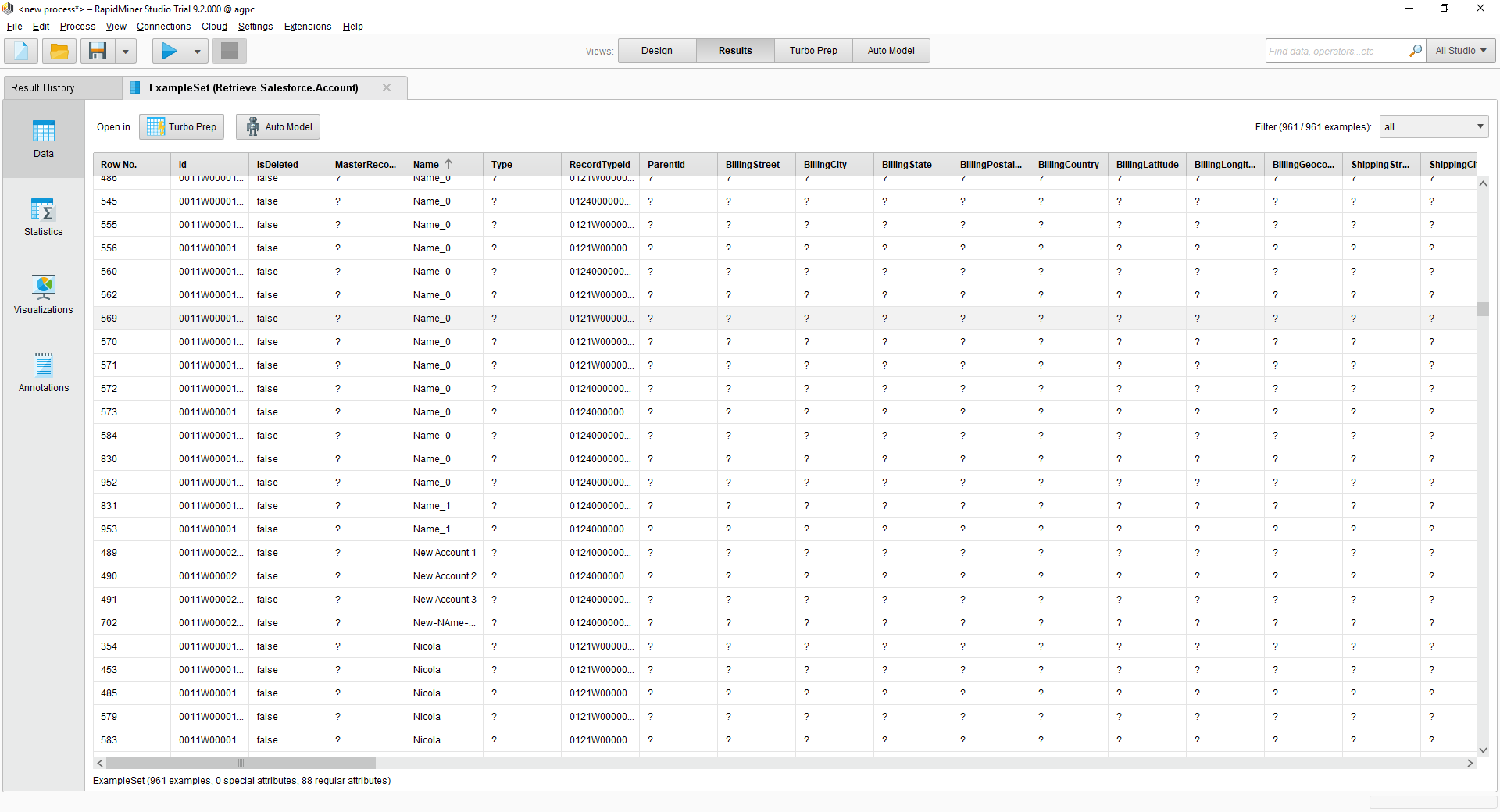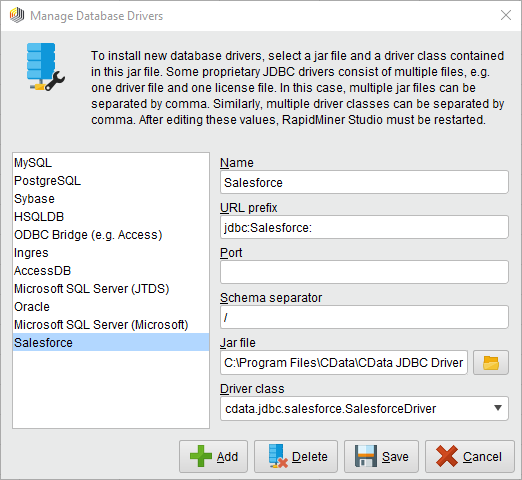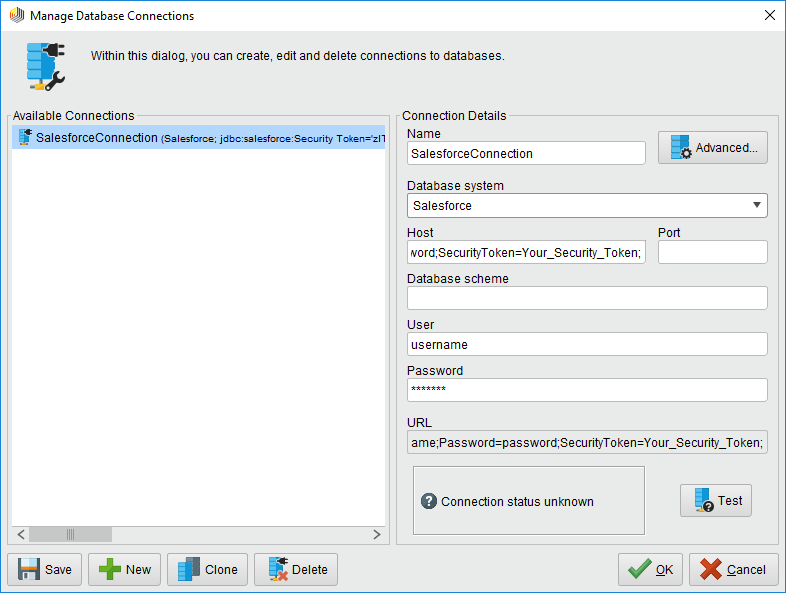Model Context Protocol (MCP) finally gives AI models a way to access the business data needed to make them really useful at work. CData MCP Servers have the depth and performance to make sure AI has access to all of the answers.
Try them now for free →Connect to Confluence Data in RapidMiner
Integrate Confluence data with standard components and data source configuration wizards in RapidMiner Studio.
This article shows how you can easily integrate the CData JDBC driver for Confluence into your processes in RapidMiner. This article uses the CData JDBC Driver for Confluence to transfer Confluence data to a process in RapidMiner.
Connect to Confluence in RapidMiner as a JDBC Data Source
You can follow the procedure below to establish a JDBC connection to Confluence:
- Add a new database driver for Confluence: Click Connections -> Manage Database Drivers.
- In the resulting wizard, click the Add button and enter a name for the connection.
- Enter the prefix for the JDBC URL:
jdbc:confluence: - Enter the path to the cdata.jdbc.confluence.jar file, located in the lib subfolder of the installation directory.
- Enter the driver class:
cdata.jdbc.confluence.ConfluenceDriver![The JDBC driver configuration. (Salesforce is shown.)]()
- Create a new Confluence connection: Click Connections -> Manage Database Connections.
- Enter a name for your connection.
- For Database System, select the Confluence driver you configured previously.
- Enter your connection string in the Host box.
Obtaining an API Token
An API token is necessary for account authentication. To generate one, login to your Atlassian account and navigate to API tokens > Create API token. The generated token will be displayed.
Connect Using a Confluence Cloud Account
To connect to a Cloud account, provide the following (Note: Password has been deprecated for connecting to a Cloud Account and is now used only to connect to a Server Instance.):
- User: The user which will be used to authenticate with the Confluence server.
- APIToken: The API Token associated with the currently authenticated user.
- Url: The URL associated with your JIRA endpoint. For example, https://yoursitename.atlassian.net.
Connect Using a Confluence Server Instance
To connect to a Server instance, provide the following:
- User: The user which will be used to authenticate with the Confluence instance.
- Password: The password which will be used to authenticate with the Confluence server.
- Url: The URL associated with your JIRA endpoint. For example, https://yoursitename.atlassian.net.
Built-in Connection String Designer
For assistance in constructing the JDBC URL, use the connection string designer built into the Confluence JDBC Driver. Either double-click the JAR file or execute the jar file from the command-line.
java -jar cdata.jdbc.confluence.jarFill in the connection properties and copy the connection string to the clipboard.
![Using the built-in connection string designer to generate a JDBC URL (Salesforce is shown.)]()
A typical connection string is below:
User=admin;APIToken=myApiToken;Url=https://yoursitename.atlassian.net;Timezone=America/New_York; - Enter your username and password if necessary.
![The connection to the JDBC data source. (Salesforce is shown.)]()
You can now use your Confluence connection with the various RapidMiner operators in your process. To retrieve Confluence data, drag the Retrieve operator from the Operators view.
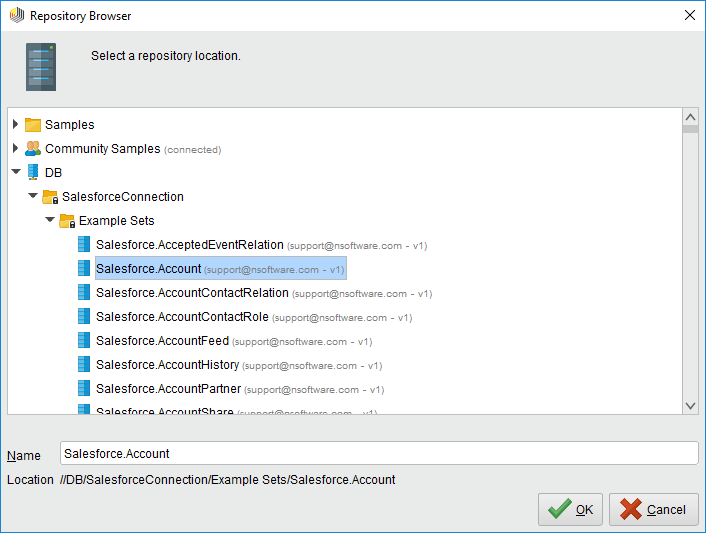 With the Retrieve operator selected, you can then define which table to retrieve in the Parameters view by clicking the folder icon next to the "repository entry." In the resulting Repository Browser, you can expand your connection node to select the desired example set.
With the Retrieve operator selected, you can then define which table to retrieve in the Parameters view by clicking the folder icon next to the "repository entry." In the resulting Repository Browser, you can expand your connection node to select the desired example set.
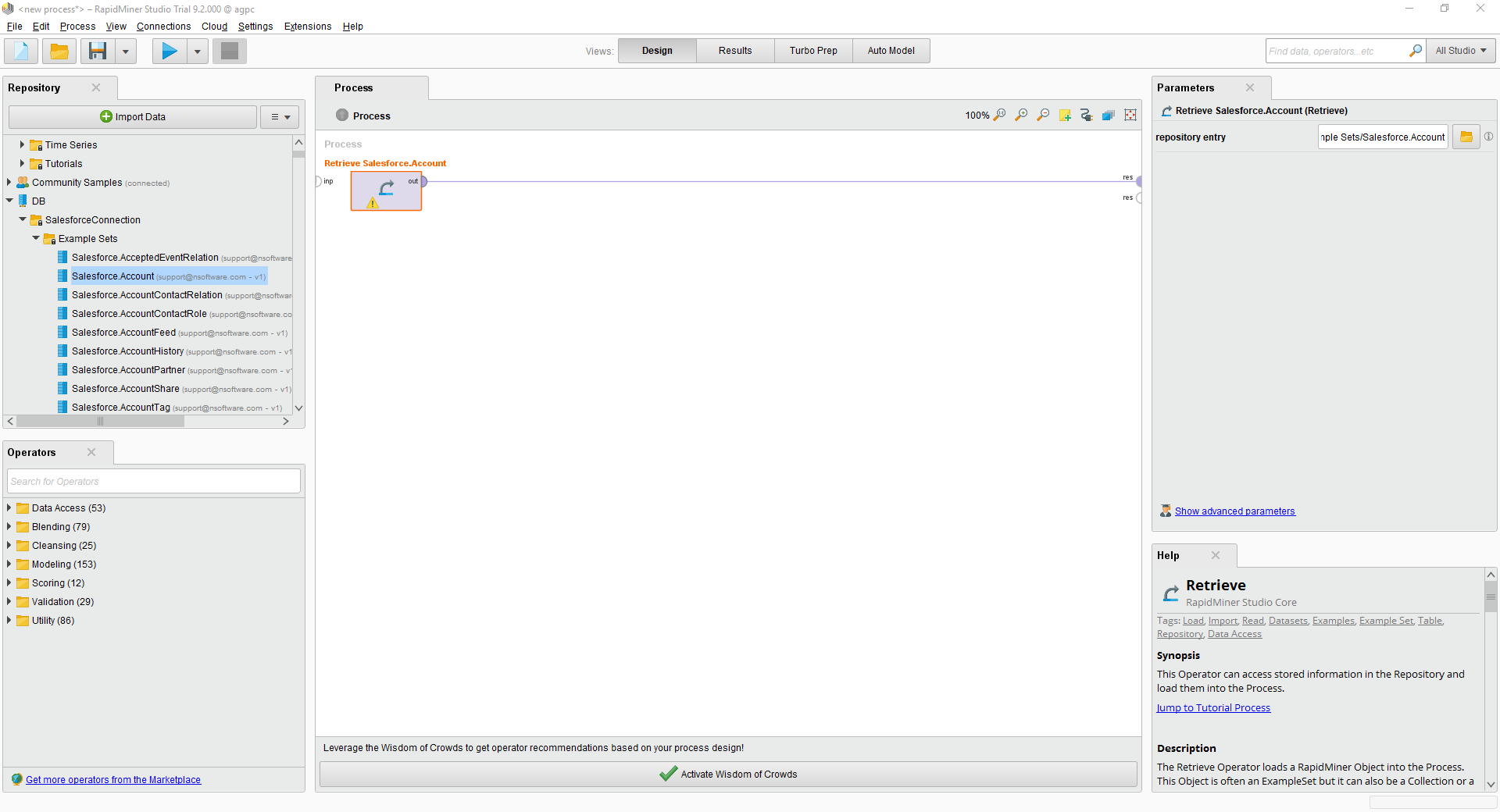
Finally, wire the output to the Retrieve process to a result, and run the process to see the Confluence data.
